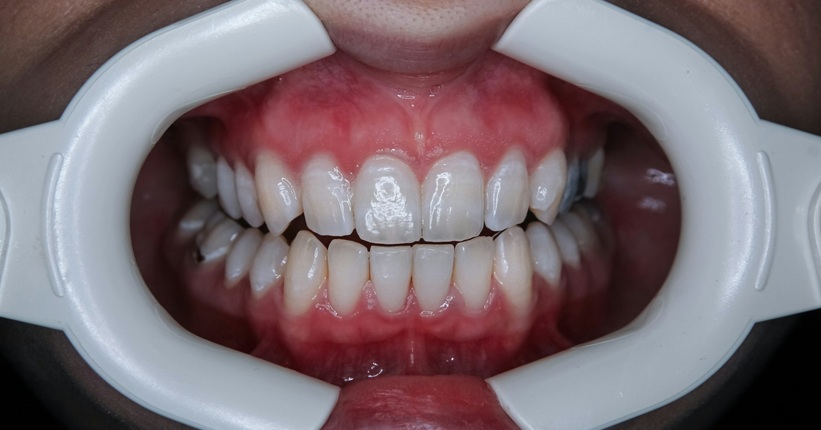
Tooth root chiseling
Tooth root chiseling, also called root resection, is one of the more advanced and complicated dental procedures, necessary to treat some cases of advanced dental pulpitis or root infection. It consists of the surgical removal of one or more tooth roots, usually when other treatments, such as root canal treatment, do not produce the expected results.
What is tooth chiseling?
Slotting the root of the tooth is performed using two techniques:
- External Alveolar Slotting — consists in removing the diseased root through access from the outside, from the side of the gum. The treatment begins with a small incision in the gum that allows access to the root. Then the dentist removes the diseased part of the root, cleans and disinfects the site, and finally sutures the wound.
- Intracorubular slotting — access to the root is obtained through the crown of the tooth, making a hole in the crown, which allows to remove the diseased part of the root and clean the root canals. After the procedure, the canal is filled and the crown of the tooth is closed with a filling or a prosthetic crown.
When is it necessary to chisel the root of the tooth?
Root chiseling is necessary in the following situations:
- Advanced pulpitis of the tooth, which does not respond to root canal treatment.
- Chronic inflammation of the periapical tissues.
- A crack in the root of the tooth that cannot be effectively repaired.
- Fractures of the tooth (longitudinal, oblique, transverse below the neck), which prevent prosthetic or conservative treatment.
- Severe root infection, impossible to cure with antibiotics or root canal treatment.
- Significant wobbling of the tooth (III degree).
- Failure of root canal treatment or previous root chiselling.
The decision on the procedure is made by a qualified dentist after a thorough assessment of the condition of the tooth.
How is the procedure performed?
Extracorubular slotting
- Local anesthesia.
- Incision of the gum and exposing the root and surrounding bone.
- Separation and removal of the diseased root with the help of specialized tools.
- Thorough cleaning and filling of the place after the root.
- Closing the wound and suturing.
- Possible reconstruction of the crown of the tooth.
Intracorubular slotting
- Local anesthesia.
- Making a hole in the crown of the tooth, access to the root canals.
- Removal of the diseased part of the root with high precision.
- Purification and filling of the canal, most often with gutta-percha.
- Closure of the tooth with a filling or a prosthetic crown.
How long does the procedure take?
The duration of the procedure depends on the number of roots removed, the degree of complication of the case and the experience of the dentist. It usually takes from 30 minutes to 2 hours. In very complicated cases, follow-up visits and phased delivery of the procedure may be necessary.
Does the procedure hurt?
During the procedure, local anesthesia is used, which minimizes pain. After the anesthesia subsides, pain and discomfort may appear, which are normal and usually subside after a few days. Your doctor may recommend pain relievers and instructions on how to care for the treatment site. Swelling and bruising are possible, but they should disappear in a short time. In case of increasing or prolonged pain, you should consult a dentist.
Recommendations after the procedure
- Avoid straining the treatment area, eat soft foods and do not bite on the side of the procedure for several days.
- Maintain oral hygiene, but avoid aggressive brushing of the treatment site.
- Gently rinse the oral cavity with saline or a special liquid prescribed by the doctor.
- Avoid intense physical exertion for several days.
- Monitor the condition of the wound — if there is redness, swelling, increasing pain, bleeding or fever, contact your doctor.
- Regularly use prescribed medications, including antibiotics.
- Schedule a follow-up visit to assess healing and rule out complications.
Is it possible to leave the root of the tooth in the gum?
Leaving the root of the tooth in the bone, especially if it is infected, can lead to serious complications such as chronic infection, the formation of cysts or abscesses. Therefore, in most cases, it is necessary to remove the diseased root to prevent further health problems.
Content author

Dr. Jan Kempa
Dr. Jan Kempa is a passionate dentist who always cares about a good relationship with patients. His positive attitude makes even the most timid patients feel safe. He specializes in implantology and dental surgery, using modern treatment techniques. He is enthusiastic about using his own tissues to rebuild bones before implantation and to cover gum recession. Dr. Kempa always finds the time to listen to the patient and offers individual solutions.

Start treatment already today!
Make an appointment and discover why our patients recommend us to their loved ones. We will take the utmost care of your smile.


